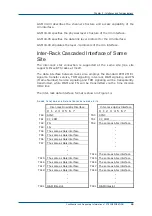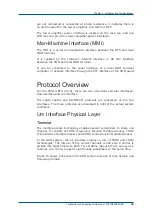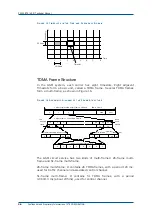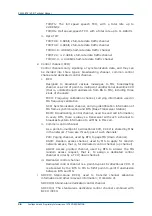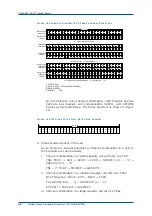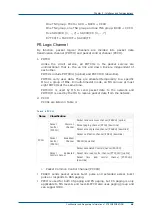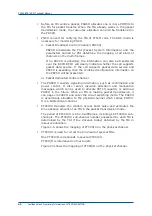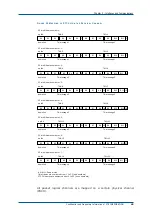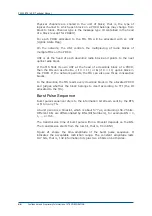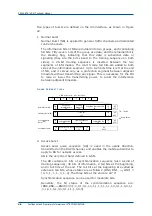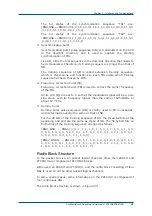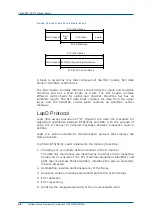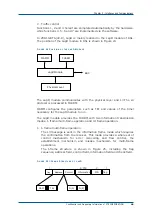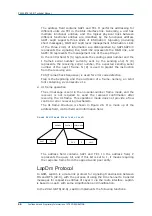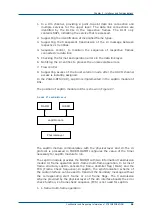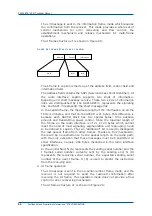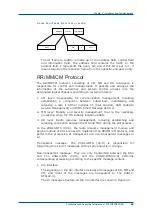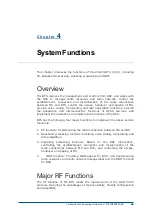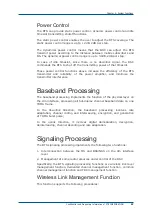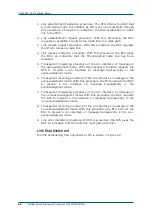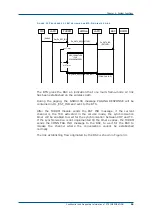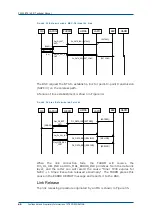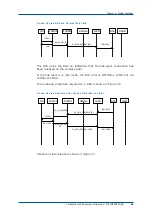
ZXG10-BTS (V2.9) Technical Manual
46
Confidential and Proprietary Information of ZTE CORPORATION
Five types of bursts are defined on the Um interface, as shown in Figure
22.
1. Normal burst
Normal Burst (NB) is applied to general traffic channels and dedicated
control channels.
The information bits of NB are divided into two groups, each containing
58 bits. Fifty-seven bits of the group are data, and the remained bit is
the stealing flag, indicating that this data is subscriber data or
signaling (they are the bits closest to the training sequence on both
sides). A 26-bit training sequence is inserted between the two
segments of information. The 3-bit 0-code tail bits are added to both
sides of the information segment. Up to 8.25 bits time is left at the end
of NB, and it serves only as a protection segment between adjacent
timeslots without transmitting any signal. This is necessary for the MS
to raise or lower the transmitting power, to avoid the interference
between adjacent timeslots.
F
I G U R E
2 2
B
U R S T
T
Y P E S
GP
68.25
GP
8.25
GP
8.25
GP
8.25
1
2
3
4
5
6
7
0
1 TDMA Frame = 8 BP = 120/26 ms
TB
3
Encryption
Information Bit
58
Training
Sequence
26
Encryption Information Bit
58
TB
3
TB
3
Fixed Bit
142
TB
3
TB
3
Encryption
Information Bit
39
Training Sequence
64
Encryption
Information Bit
39
TB
3
TB
Synchronization Sequence
41
Information Bit
36
TB
3
TB: Tail Bit
GP:Guard Period
Normal Burst(NB)
Frequency Burst(FB)
Synchronization
Burst (SB)
Access Burst (AB)
TB
8
2. Access burst
Access burst pulse sequence (AB) is used in the uplink direction,
transmitted on the RACH channel, and enables the mobile subscriber to
apply to BS for network access.
AB is the only short Burst defined in GSM.
The AB contains 41 bits of synchronization sequence (also a kind of
training sequence), 36 bits of information, 8 tail bits at the beginning,
and 3 tail bits at the end. The tail bits at the beginning are called as
extension tail bits, whose states are as follows: (BN0, BN1,
…
, BN7) =
(0, 0, 1, 1, 1, 0, 1, 0).The three bits at the end are all “0”.
Synchronization sequence can be used for modulate bits.
Generally, the bit states of the synchronization sequence are:
(BN8,BN9,
…
,BN48)=(0,1,0,0,1,0,1,1,0,1,1,1,1,1,1,1,1,0,0,1,1,0,0,1,1
,0,1,0,1,0,1,0,0,0,1,1,1,1,0,0,0).
Summary of Contents for ZXG10-BTS
Page 4: ...This page is intentionally blank ...
Page 8: ...Figures 121 Tables 123 ...
Page 9: ...This page is intentionally blank ...
Page 10: ......


